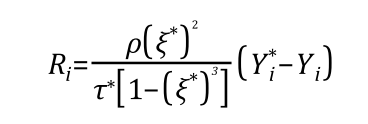-
-
February 23, 2021 at 8:17 pm
HorstvanGrass
SubscriberHi,
I have a question about the eddy dissipation concept. The reaction rate of a specie i in fluent is defined by
February 24, 2021 at 5:31 pmwcao
Ansys EmployeeHello,nThe calculation of Y* is through time integration over the time scale tau* via either a stiff chemistry solver of chemkin CFD solver. Basically they are just ODE solvers that integrate the species mass fractions via the reaction rate calculated by Arrhenius law with temporary mass fractions. If you are referring to Magnussen for the original paper, most of the formula in it is assuming fast chemistry so that it might not be a good start point. You can refer to the article below, which has some derivation from Magnussen to the formula used by Fluent:nDe, A., Oldenhof, E., Sathiah, P. and Roekaerts, D., 2011. Numerical simulation of delft-jet-in-hot-coflow (djhc) flames using the eddy dissipation concept model for turbulence?chemistry interaction. Flow, Turbulence and Combustion, 87(4), pp.537-567. nFebruary 24, 2021 at 6:04 pmHorstvanGrass
SubscriberHi wcao,nyou just saved me a bunch of time. Thank you so much I would never find it on my own. Yes I meant the original paper from Magnussen. I will have a look to the posted paper!nViewing 2 reply threads- The topic ‘EDC Combustion model small scale mass fraction’ is closed to new replies.
Ansys Innovation SpaceTrending discussionsTop Contributors-
3597
-
1208
-
1092
-
1068
-
952
Top Rated Tags© 2025 Copyright ANSYS, Inc. All rights reserved.
Ansys does not support the usage of unauthorized Ansys software. Please visit www.ansys.com to obtain an official distribution.
-
The Ansys Learning Forum is a public forum. You are prohibited from providing (i) information that is confidential to You, your employer, or any third party, (ii) Personal Data or individually identifiable health information, (iii) any information that is U.S. Government Classified, Controlled Unclassified Information, International Traffic in Arms Regulators (ITAR) or Export Administration Regulators (EAR) controlled or otherwise have been determined by the United States Government or by a foreign government to require protection against unauthorized disclosure for reasons of national security, or (iv) topics or information restricted by the People's Republic of China data protection and privacy laws.












